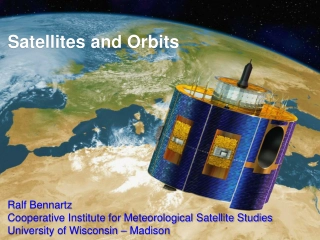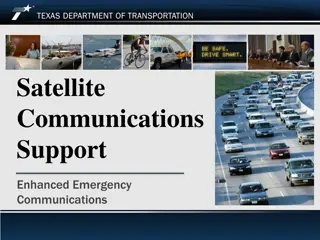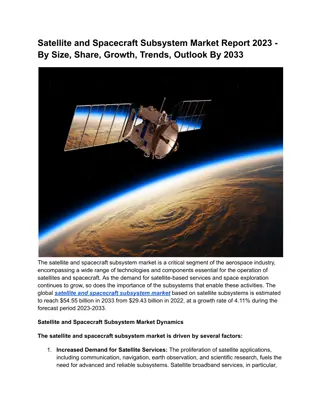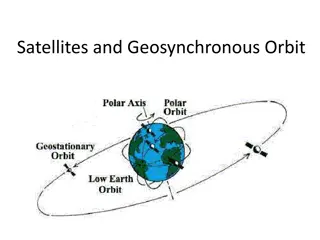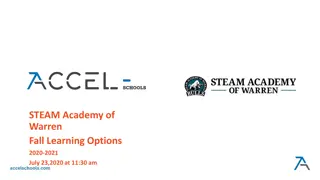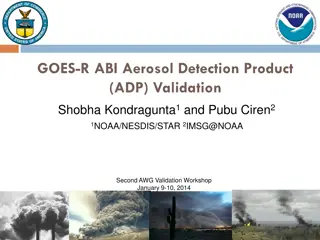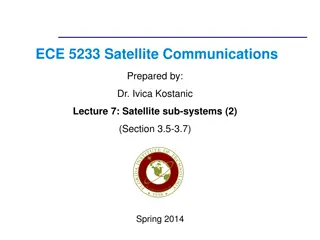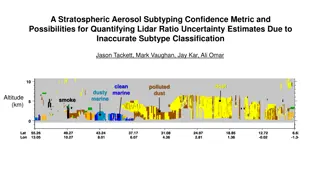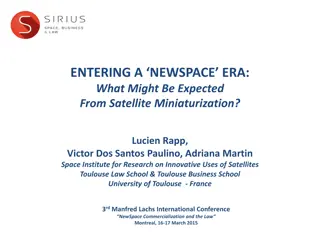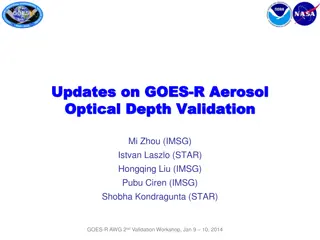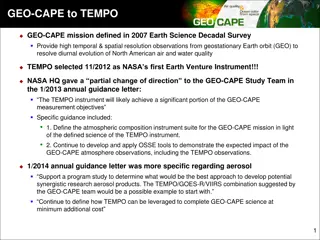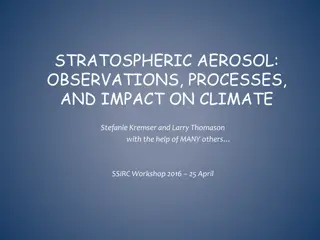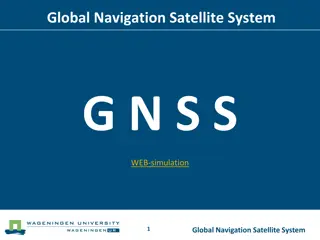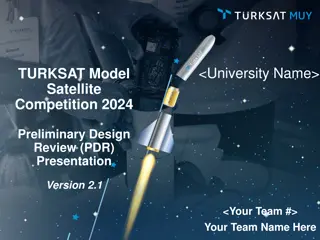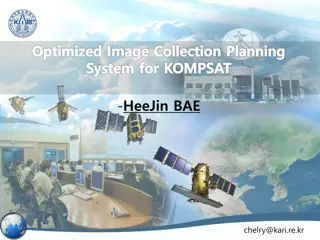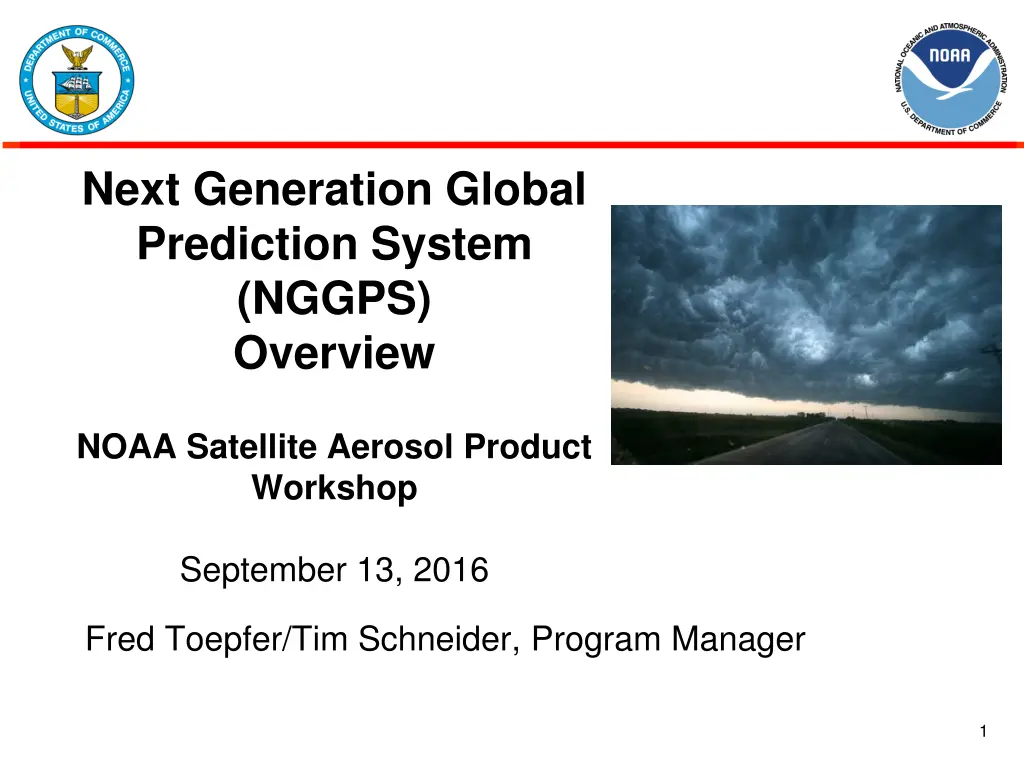
NGGPS Overview and Implementation Highlights
"Learn about the Next Generation Global Prediction System (NGGPS) goals, objectives, and project activities including the development of a fully coupled system for global atmospheric prediction. Explore the implementation plan, team participation, and enhanced community involvement since 2015."
Download Presentation

Please find below an Image/Link to download the presentation.
The content on the website is provided AS IS for your information and personal use only. It may not be sold, licensed, or shared on other websites without obtaining consent from the author. If you encounter any issues during the download, it is possible that the publisher has removed the file from their server.
You are allowed to download the files provided on this website for personal or commercial use, subject to the condition that they are used lawfully. All files are the property of their respective owners.
The content on the website is provided AS IS for your information and personal use only. It may not be sold, licensed, or shared on other websites without obtaining consent from the author.
E N D
Presentation Transcript
Next Generation Global Prediction System (NGGPS) Overview NOAA Satellite Aerosol Product Workshop September 13, 2016 Fred Toepfer/Tim Schneider, Program Manager 1
NGGPS Goals and Objectives1 Design/Develop/Implement NGGPS global atmospheric prediction model Non-hydrostatic scalable dynamics Improve data assimilation and physics Position NWS for next generation high performance computing Engage community in model/components development Reduce implementation time Increase effectiveness of product distribution Post-processing, assessments, and display World s Best Global Forecast Guidance 2 1From NWS Budget Initiative proposal to OMB
NGGPS Description Fully coupled system: ocean, waves, sea ice, land surface, atmosphere, aerosols and atmospheric composition Built using NEMS/Earth System Modeling Framework Each component model will be community code Atmospheric Components Aerosols/ Atm Composition (GOCART/MAM) Whole Atm Model (WAM) Atm Physics (CCPP) Atm Dycore (FV3) Data NEMS/ESMF Assimilation Ocean (HYCOM) (MOM) Wave (WW3) (SWAN) Land Surface (NOAH) Sea Ice (CICE/KISS) 3
Project Activities and Status Highlights Develop Implementation Plan Broaden community participation Select the dynamical core Accelerate NEMS - Develop Prototype Coupled System GSM, LIS/Noah, HYCOM, MOM5/6, CICE, are WW3 are all integrated into NEMS. GSM, MOM5, and CICE are now coupled Upgrade EMC infrastructure to support community participation Software and Scientific Development at EMC (SciTech Task) awarded NEMS development, software engineering, technical support for infrastructure upgrades, R&D for upgrade of global modeling components - Physics and DA development are in progress Transition of MET+ into EMC environment - in progress 4
NGGPS Implementation Plan Developed Implementation Plan Team participation across NOAA line offices/laboratories, Navy, NASA, UCAR and coordination with the High Impact Weather Prediction Project and the National Earth System Prediction Capability program Team Plans posted on NGGPS website: http://www.weather.gov/sti/stimodeling_nggps_implementation 5
Enhanced Community Participation Since 2015 2015 Federal Funding Opportunity (FFO): 14 NGGPS proposals selected, $5M funded over two years 9 NGGPS testbeds proposals selected, $3.4M funded over two years Research and development topic areas funded Physics driver and parameterization Aerosol model Atmospheric model and data assimilation Ocean, wave and sea ice models, and associated data assimilation Land surface model and data assimilation Ensemble development Model coupling and efficiency Testbeds The new CSTAR website lists all grants http://www.weather.gov/sti/stigrants 6
Expanded Community Participation in 2016 2016 Federal Funding Opportunity (FFO) 11 NGGPS proposals awarded, $1.9M for first year 6 NGGPS testbed proposals awarded, $1M for first year Funding community participation in coordination with other programs Coordination and co-funding with CPO and USWRP Accelerating development and use of community components NGGPS Test Bed Activities/Global Modeling Test Bed (GMTB) Developmental testing of new functionality Facilitates community involvement in ongoing development of operational modeling systems (e.g. code management, test and evaluation of operational system upgrades proposed by external community) 7
Global Model Test Bed (GMTB) Role Extension of current DTC (NCAR and GSD partnership) Developmental testing of new functionality Facilitates community involvement in ongoing development of operational modeling systems Community code management Facilitates use of code in non-NOAA platforms Provides necessary infrastructure for community to interact with code system Supports code system to external developers Independent test and evaluation of proposed upgrades to operational system from external community 8
GMTB Current Focus Atmospheric physics Create and support a Common Community Physics Package (CCPP) with carefully vetted physics suites for global modeling at various resolutions Develop a design and implementation plan to evolve current Interoperable Physics Driver (IPD) to meet the needs of NGGPS Implement a testbed for innovations NGGPS Physics Workshop planned for 7-9 November 2016 Sea ice model evaluation Participate in efforts to create a plan for fostering community collaboration in Los Alamos Sea Ice Model (CICE) development 9
NGGPS Global Atmospheric Model Technical Strategy Reduce implementation time and risk by separating dynamic core and model physics Identify and implement an advanced dynamical core for global weather forecast applications Highly scalable Non-hydrostatic Accelerate evolution of model physics Develop/Implement Common Community Physics Package (CCPP) Based on current GFS physics package Integration of best of other existing physics packages Scale-aware Develop a new community approach Employ Global Modeling Test Bed (GMTB)/Developmental Testbed Center (DTC) and a more robust Joint Center for Satellite Data Assimilation (JCSDA) to encourage and facilitate community interaction Accelerate O2R & R2O 10
NGGPS Phase 1 Candidate Dynamical Cores MPAS (NCAR) Unstructured grid with C-grid discretization FV3 (GFDL) Cubed sphere, finite-volume NIM (ESRL) Non-hydrostatic Icosahedral Model NEPTUNE (Navy) Flexible grid with adaptive mesh Refinement NMMB-UJ (EMC) Finite difference, cartesian grid, global extension of regional model GSM-NH (EMC) Non-hydrostatic extension of Semi-Lagrangian Global Spectral Model Global Spectral Model not included Non-hydrostatic version not available 11
NGGPS Atmospheric Model Phased Implementation Approach Phase 1 (FY15) Identify Qualified Dynamic Cores (Complete) Evaluate technical performance Scalability Integration of scheme stability and characteristics Phase 2 (FY16) Select Candidate Dynamic Core (Complete) Integrate with operational GFS Physics Evaluate meteorological performance Phase 3 (FY17-19) Dynamic Core Integration and Implementation (Underway) * NGGPS Dycore Test Group guided effort throughout Phases 1 and 2 12
Overall Assessment and NGGPS Program Manager Recommendation The FV3 core represents the lowest risk, lowest cost candidate for the new NGGPS atmospheric model Compared to the MPAS, FV3: Meets all technical needs Less expensive to implement Higher readiness for implementation Significantly better technical and computational performance Lower risk NGGPS strategy has always been to find and implement the best global model (not the best convective scale model, although nothing in results precludes eventual global/convective-scale unification based on FV3) Director, NWS Decision (with NOAA Administrator concurrence): Select GFDL FV3 and proceed to NGGPS Phase 3 dynamic core integration and implementation 13
NGGPS Program Next Steps Develop a NOAA Modeling Strategic Plan Implement selected dynamical core Implement Common Community Physics Package Implement improved data assimilation (4DEnVar with 4D incremental analysis update and stochastic physics) Develop enhanced post-processing, ensemble methods; verification and validation; visualization tools and techniques Initiate community model environment, beginning with DTC, GMTB and JCSDA Conduct robust and ongoing testing and evaluation of components and systems, with community involvement 14
Summary Global model dynamic core selected (GFDL FV3) Teams continue to identify, prioritize and develop model component and system improvements for NGGPS Community Involvement Coordinate proposal driven scientific development by universities, federal labs, and testbeds (including 2016 FFO selections); establishment of GMTB; collaboration with JCSDA through JEDI Future focus areas Phase 3 dynamic core integration Accelerate evolution of model physics - develop/implement Common Community Physics Package (CCPP) Data assimilation improvements Enhance across-team coordination Accelerate model component and system development and integration of community development into testing at EMC 15
STI Modeling Program Website: http://www.weather.gov/sti/stimodeling Information NGGPS: http://www.weather.gov/sti/stimodeling_nggps Information on Grants: http://www.weather.gov/sti/stigrants 16
Back-up 17
NGGPS Over-Arching Objectives Re-establish US as the World leader in Global Weather Prediction Extend forecast skill beyond 8 to 10 days Improve hurricane track and intensity forecast Extend Weather Forecast to 30 days Implement a fully-coupled NWP System Atmosphere, Ocean, Sea Ice, Land Surface, Waves, Aerosols and Atmospheric Composition Support development of products for weeks 3 and 4 Support unification of the NWS Numerical Weather Prediction Suite 5-year Community Effort 18
Strategy for Years 3 - 5 Demonstrate increased skill out to longer time scales 7-day skill extended to 14 days Increased predictability of severe weather Accelerate development of model components and improve coupling capabilities Research from community should start translating into operational development plans Improve system and software architecture to increase performance and interoperability Efficient transfer to fine-grain computing platforms Operationally implement the fully coupled global ocean-atmosphere-ice-wave prediction system 19
NGGPS Phase 1 Dynamical Core Evaluation Evaluate technical performance Scalability Integration of scheme stability and characteristics Proceed to Phase 2 testing and evaluation with two dynamical cores: FV3 and MPAS low technical risk no unique dynamical core quality will be lost Briefed to NWS and OAR Assistant Administrators, July 2015 Evaluation Criteria Bit reproducibility for restart under identical conditions Solution realism for dry adiabatic flows and simple moist convection High computational performance and scalability Extensible, well-documented software that is performance portable Execution and stability at high horizontal resolution (3 km or less) with realistic physics and orography How evaluation was done Query model developers (AVEC) Perform series of idealized tests and evaluate solutions Benchmarks run by AVEC Subjective evaluation of source code by AVEC 72-h forecasts with realistic physics and orography using operational GFS initial conditions (Moore tornado and Hurricane Sandy) Evaluate idealized test case solutions Lack of excessive grid imprinting 20
NGGPS Phase 2 Dynamical Core Testing Criteria Integrate with operational GFS Physics/CCPP # Evaluation Criteria* Plan for relaxing shallow atmosphere approximation (deep atmosphere dynamics) Accurate conservation of mass, tracers, entropy, and energy Robust model solutions under a wide range of realistic atmospheric initial conditions using a common (GFS) physics package Computational performance with GFS physics Demonstration of variable resolution and/or nesting capabilities, including supercell tests and physically realistic simulations of convection in the high-resolution region Stable, conservative long integrations with realistic climate statistics Code adaptable to NEMS/ESMF Detailed dycore documentation, including documentation of vertical grid, numerical filters, time-integration scheme and variable resolution and/or nesting capabilities Evaluation of performance in cycled data assimilation 1 2 3 Evaluate meteorological performance 4 5 6 Results publicly available; report in preparation http://www.weather.gov/sti/stimod eling_nggps_implementation_atm dynamics 7 8 9 10 Implementation Plan (including costs) * Evaluation criteria approved by DTG consensus in January 2016 21
Joint Effort for Data assimilation Integration (JEDI) Goals Next-generation unified data assimilation system Increase R2O transition rate (from academia to operations) Increase science productivity and code performance Strategy Modular code for flexibility, robustness and optimization Mutualize model-agnostic components across: - Applications (atmosphere, ocean, strongly coupled, etc) - Models & Grids (operational/research, regional/global models) - Observations (past, current and future) Collective reduction of entropy 22
Joint Effort for Data assimilation Integration (JEDI) Simultaneous top-down and bottom-up approach Top-down approach Start with a clean slate Redesign entire architecture (ECMWF, Met Office, NCAR) Bottom-up approach Start from existing codes Incremental modularization (NCEP GSI refactoring, Navy) Roadmap gradually connecting the two approaches 23

